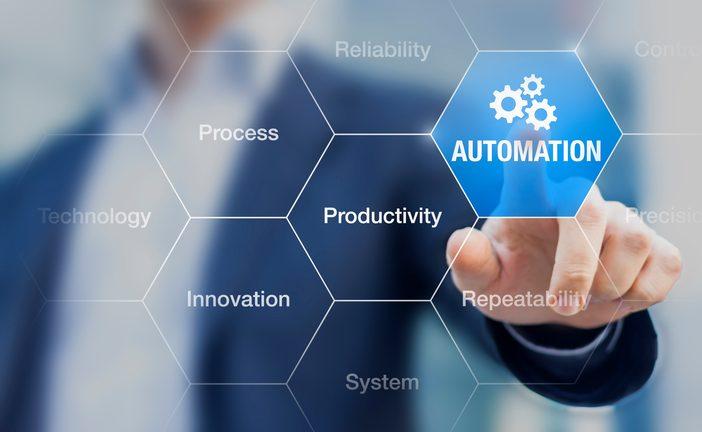
In today’s rapidly evolving business landscape, the journey from candidate to committed team member is more crucial than ever. Traditional onboarding processes often resemble a maze of paperwork, training sessions, and endless introductions, leaving new hires feeling overwhelmed and disconnected from their roles. Enter artificial intelligence: a transformative force poised to revolutionize the onboarding experience. By integrating AI agents into the onboarding process, organizations can simplify and enhance employee integration—creating a more efficient, engaging, and personalized pathway for new talent. This article delves into how these clever systems are not only streamlining administrative tasks but also fostering a sense of belonging and engagement from day one,ultimately shaping a more productive workforce. Join us as we explore the innovative ways AI is redefining the onboarding experience for companies and their newest members.
Leveraging AI-Powered Chatbots for Dynamic Onboarding Experiences
In today’s fast-paced work surroundings, AI-powered chatbots are revolutionizing the way new employees embark on their onboarding journeys. By providing instant access to critically important information, these virtual assistants streamline processes that traditionally consumed valuable time and energy.For instance, chatbots can:
- Guide new hires through essential paperwork seamlessly
- Provide real-time answers to frequently asked questions
- Share company policies and cultural insights at the click of a button
This not only ensures that employees have the resources they need readily available, but it also fosters a sense of confidence and engagement from day one.
Moreover, the integration of machine learning capabilities enables chatbots to adapt over time, learning from interactions and improving their responses. This creates a personalized onboarding experience tailored to each individual’s role and background. consider the following table that illustrates key tasks and how chatbots can facilitate them:
| Task | AI Chatbot Assistance |
|---|---|
| Schedule orientation meetings | Automatically coordinates and confirms appointments |
| Connect with teams | Introduces new hires to key team members |
| Track progress | Monitors onboarding milestones and sends reminders |
This level of support not only enhances employee morale but also contributes to higher retention rates, making AI-driven onboarding a win-win for both the organization and it’s workforce.

Personalizing training Modules Through Intelligent Data Analytics
In today’s fast-paced work environment, standard training modules can sometimes fall short of meeting the specific needs and learning styles of new employees. By harnessing the power of intelligent data analytics, organizations can craft personalized training experiences that ensure maximum engagement and retention. Utilizing data from employee performance, feedback, and learning preferences, AI can identify gaps in knowledge and tailor content accordingly. This approach not only enhances the effectiveness of the onboarding process but also fosters a sense of value among new hires, making them feel that their individual growth is prioritized.
Moreover, data-driven insights allow trainers to continuously refine training programs based on real-time analytics. With the capability to track progress and engage in predictive analysis, organizations can shift from a one-size-fits-all strategy to a more dynamic, responsive framework. Features of this personalized approach include:
- Adaptive Learning Paths: Employees receive customized resources that align with their unique learning trajectories.
- Feedback Mechanisms: Regular assessments and surveys to determine the effectiveness of training materials.
- Collaboration Opportunities: Interactive modules that connect new hires with peers and mentors.
| Feature | Description |
|---|---|
| Personalized Content | Modules tailored to specific skill gaps and learning styles. |
| Real-Time Feedback | Ongoing assessments that refine learning strategies. |
| Engagement Analytics | Monitoring participation and interaction to enhance collaboration. |

Automating Administrative Tasks to Free Up Human Resources
As organizations strive to optimize their operational efficiency, automating routine administrative tasks plays a crucial role in unlocking the full potential of human resources.By leveraging AI agents, companies can streamline the onboarding process, ensuring that new employees have a smooth transition into their roles. These intelligent systems can manage various repetitive tasks, such as:
- Document Verification: Quickly validating the necessary paperwork and credentials.
- Scheduling Orientation Sessions: Automatically booking training sessions that align with new joiners’ availability.
- Data Entry and maintenance: Efficiently entering employee information into HR systems.
Furthermore, AI can enhance knowledge transfer during onboarding by providing personalized learning paths tailored to individual skills and experiences. This can include interactive training modules, on-demand FAQs, and even chatbots that respond to queries in real-time. The advantages are clear:
| Benefits of AI in Onboarding | Impact |
|---|---|
| Time Efficiency | Reduces onboarding duration by up to 30% |
| Cost Savings | Minimizes administrative overheads and staffing needs |
| Employee Satisfaction | enhances the onboarding experience leading to higher retention rates |
By embracing these advanced technologies, organizations can not only maintain compliance and consistency during onboarding but also create a more engaging experience for new employees. Ultimately,this results in a workforce that is better prepared,more productive,and more aligned with company values from day one.
Facilitating Continuous Feedback Loops with AI-Driven Insights
In the rapidly evolving landscape of workforce integration, the role of AI in creating effective feedback mechanisms is paramount. By leveraging AI-driven insights, organizations can cultivate an environment where continuous feedback becomes the norm rather than the exception.This approach not only ensures that new hires receive timely evaluations of their performance but also fosters a culture of open communication. Here are several key advantages of implementing these insights:
- Real-time Feedback: AI can analyze employee interactions and performance data, offering immediate suggestions for both new employees and managers.
- Identifying Trends: Machine learning algorithms can detect patterns over time, highlighting areas where new employees excel or struggle.
- Personalized Progress: Tailored feedback delivered to individuals helps them focus on specific competencies that need enhancement.
In addition to these benefits, companies can integrate structured feedback sessions into their onboarding programs through intuitive AI tools, fostering collaboration between team members and enhancing engagement. A grate method for monitoring feedback frequency and effectiveness involves using a simple table to track interactions:
| Feedback Type | Frequency | responsible Parties |
|---|---|---|
| Weekly Check-ins | Every week | New Hire & Manager |
| Monthly Performance Review | Monthly | HR & Team Lead |
| Peer Feedback Session | Bi-weekly | Team Members |
This structured approach, when combined with AI monitoring capabilities, empowers organizations to keep their onboarding processes dynamic and adaptable, allowing new employees to thrive in their roles while seamlessly adjusting to the company culture. Ultimately, this fusion of technology and human insight positions businesses to unlock the full potential of their talent acquisition strategies.
To Wrap It Up
In the rapidly evolving landscape of the modern workplace, the integration of AI agents into the onboarding process emerges not merely as a trend, but as a transformative strategy that redefines how organizations welcome new talent. As we’ve explored,these intelligent assistants offer a myriad of benefits—from personalized training experiences to real-time support—ensuring that new hires feel valued and engaged from day one. As companies continue to adapt to the shifting demands of the workforce, leveraging AI for onboarding not only streamlines the integration process but fosters a culture of innovation and responsiveness.The potential for improved retention rates and enhanced job satisfaction underscores the importance of investing in these technological solutions. Looking ahead, organizations that embrace AI as a vital component of their onboarding journey may find themselves at a considerable advantage—creating an empowered workforce that is ready to contribute, collaborate, and thrive. As we stand on the brink of this new era in employee integration, the journey towards a seamless onboarding experience is just beginning, and the possibilities are as limitless as our imagination.

